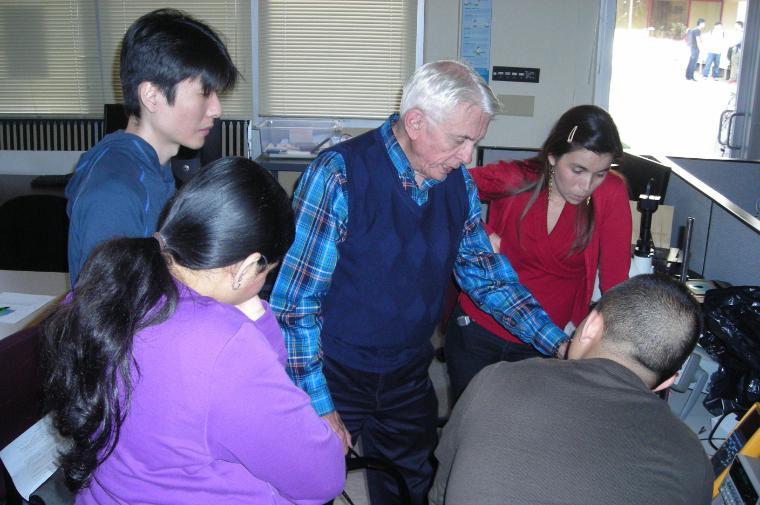
A Different Kind of Lab
Timothy Healy, professor of electrical engineering, had a vision for a different kind of research laboratory. One that is focused on addressing the world’s energy challenges. One where a select group of highly motivated student scholars engages with tools for learning—formal instruction, yes, but also mentors from the world outside academia, field trips, and talks by industry leaders. A lab where students direct their research themselves, identifying and solving problems on their own. A place to serve as a living, evolving experiment in how to best encourage student research, curiosity, and love of learning.
Dr. Healy's brainchild is the Latimer Energy Lab, and since 2012 (through an endowment from an anonymous donor), both students and the Lab have benefited from its director's thirst for excellence and drive for ever-improving pedagogy. "I wanted the Lab to be an incubator for new teaching methods," Healy said. "Each summer we experiment with different approaches. Since the beginning, students have worked in small groups on a specific problem. More recently we've put larger teams of scholars to work on components of one 'super project' or on several synergistic projects. Current research points to the value of providing students the opportunity to problem-solve collaboratively, mirroring the way they will function when they start their careers."
Assisting Healy is mentor and adjunct professor Greg P. Smestad '83, founder of Sol Ideas Technology Development, and expert in the field of optoelectronics and materials used for solar energy conversion. "For one of the first projects," explains Healy, "Greg donated equipment and mentored Peter Stephens '14 (mechanical engineering) and Daniel Shull '14 (bioengineering) as they researched and modeled the power output of a Solyndra photovoltaic panel compared with a typical flat PV module, confirmed theory through experimentation, and presented their work at two conferences."
Visiting scholar from Brazil Jacqueline Barbosa and Kirby Linvill '15 (computer science and engineering) measured current-voltage characteristics of solar panels. Linvill wrote an Arduino code that reduced the cost from $6,000 to under $100, making solar measurements affordable for developing countries.
One of last summer’s projects, an improved cookstove that uses the fire's heat to generate electricity for ventilation and water pasteurization, was recently implemented successfully by Christopher Clark '17 (mechanical engineering) in Tanzania and Malawi.
Smestad said, "The Latimer Lab is unique in the cross-pollinations it allows. A bridge is formed between a mechanical engineering student and the physics department, between an electrical engineering student and one in chemistry, and between engineering and environmental science majors. Dr. Healy opens the Lab up to other disciplines and encourages collaboration. He's always trying new experiments for the Lab; he's always exploring."
Alumni of the Lab have gone on to graduate study and careers at Apple, Lockheed Martin, Teradata, and utility companies. The future looks brighter still. "It is my hope that the Latimer Energy Lab can serve as a springboard toward a major new lab in the STEM complex now under development," said Healy.